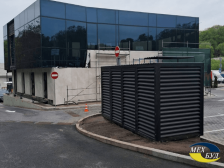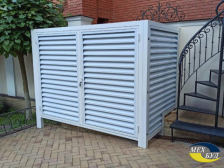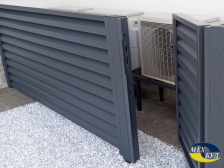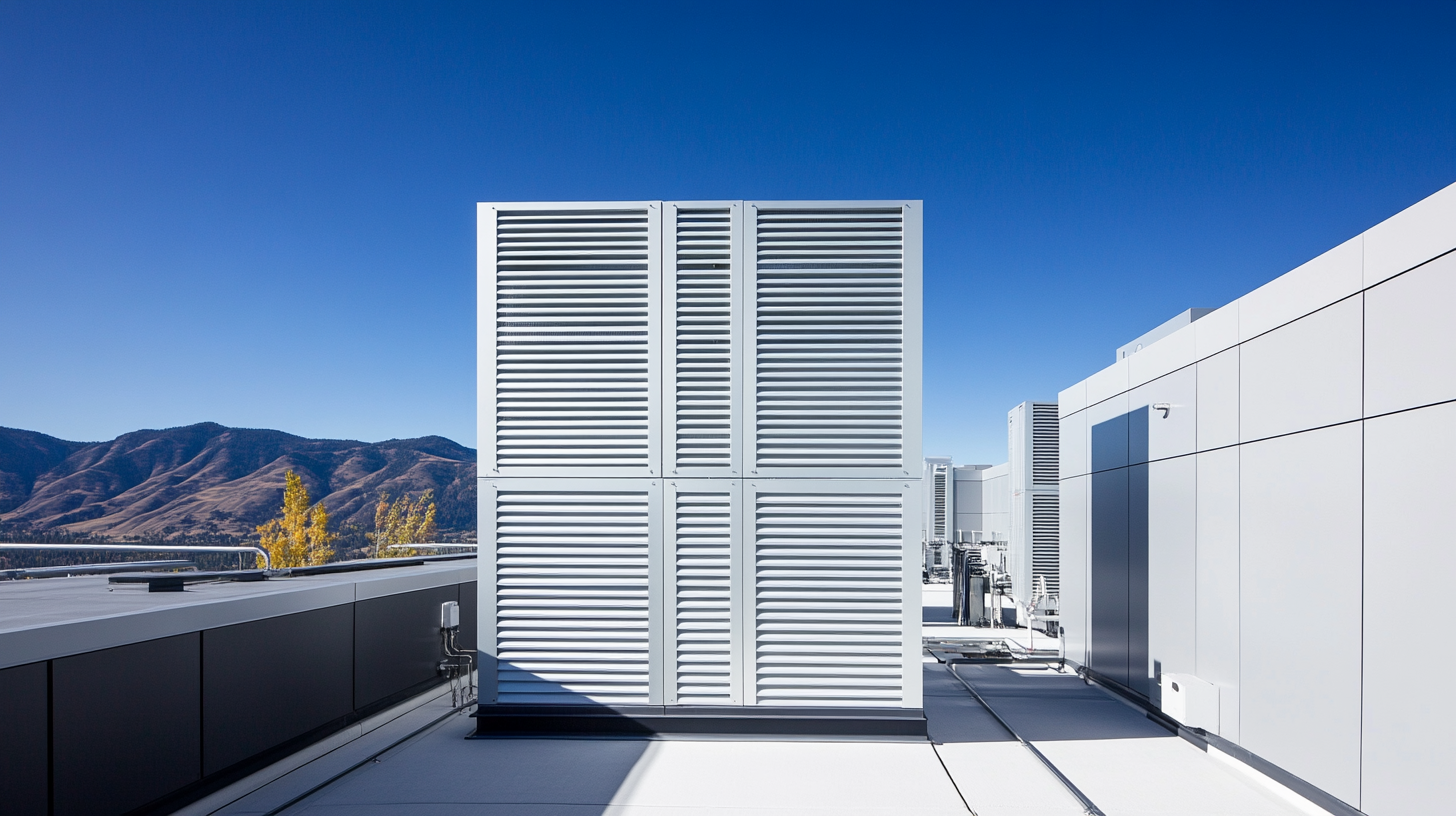Section 1: Foundational Aerodynamics of Louver Systems
The specification of architectural louvers for Heating, Ventilation, and Air Conditioning (HVAC) systems is a critical design decision that profoundly impacts building performance, energy consumption, and occupant comfort. While often perceived as simple screening elements, louvers are complex aerodynamic components governed by principles of fluid dynamics. An effective design and specification process requires moving beyond rudimentary geometric metrics to a nuanced understanding of performance-based data. This section establishes the foundational aerodynamic principles of louver systems, deconstructing common metrics, quantifying airflow resistance, and introducing the advanced coefficients that provide a true measure of efficiency.
1.1 Beyond Percentage: Deconstructing Louver Free Area
The most frequently cited metric in louver specification is the “free area,” defined as the minimum area within a louver assembly through which air can pass. It is calculated by subtracting the area of all obstructions—namely the frame and the projected area of the blades—from the total face area of the louver. The standard formula is expressed as:
Free Area=Total Louver Area−Airflow Restrictions
For comparative purposes, manufacturers typically publish free area as a percentage based on a standard 48-inch by 48-inch (1219 mm x 1219 mm) test unit, as stipulated by industry testing standards. This metric is the foundational variable used to calculate the
free area velocity—the speed at which air passes through the louver’s openings—which is then used to determine key performance characteristics like pressure drop and water penetration.
However, the industry’s historical reliance on “percent free area” as a primary selection criterion is a legacy of geometry-based design that is now recognized as technically insufficient and potentially misleading. The fundamental limitation of this metric is that the percentage of free area is not a constant value; it is highly dependent on the louver’s overall dimensions and aspect ratio. As a louver’s size decreases, its free area as a percentage of the total face area also decreases disproportionately. This is because the fixed-width frame constitutes a progressively larger portion of the total area in smaller units. This effect is most pronounced in louvers with a low height-to-depth ratio. A widely accepted rule of thumb is to avoid selecting louvers where the height is less than four times the depth, as the fixed height of the head and sill frames drastically reduces the available area for airflow. For example, a 48-inch by 48-inch louver might have a 55% free area, but a 48-inch by 12-inch version of the same model could have a free area as low as 37%. Furthermore, non-rectangular shapes, such as triangles or arches, introduce additional complexities. The mitered connections where blades meet the angled frame effectively shorten the rear edge of each blade, creating “dead” zones that further reduce the functional free area.
This variability demonstrates that selecting a louver based solely on a high published free area percentage can lead to significant performance miscalculations if the specified louver size differs from the standard test size. The metric ignores the actual shape of the airflow path and the turbulence created by the blade profile, which are the true determinants of aerodynamic efficiency. A more sophisticated, performance-based approach is required, focusing on the actual resistance the louver imposes on the HVAC system at its design airflow rate.
1.2 Pressure Drop: Quantifying Resistance to Airflow
Pressure drop is the quantitative measure of a louver’s resistance to airflow, typically expressed in units of inches of water gauge (in. w.g.) or Pascals (Pa). It represents the loss of static pressure, or energy, as air is forced to navigate the tortuous path created by the louver blades. This metric is a direct indicator of how much additional work an HVAC system’s fan must perform to move a required volume of air through the building envelope.
The magnitude of pressure drop is a function of several interrelated factors: free area, air velocity, and blade profile. For a given volume of air, a louver with less free area will constrict the flow, forcing an increase in air velocity. Since pressure drop is proportional to the square of the velocity, even a small decrease in free area can lead to a significant increase in resistance. The geometry of the blades is equally critical. Simple, flat blade profiles present minimal obstruction and thus generate low pressure drop. Conversely, complex blade profiles engineered for weather protection, featuring rain hooks, gutters, and multiple bends, create more turbulence in the airstream, which manifests as a higher pressure drop. The addition of accessories like bird or insect screens can further increase pressure drop by as much as 10% to 17%.
The impact of pressure drop on the overall HVAC system cannot be overstated. High pressure drop forces system fans to operate at higher speeds to maintain the design airflow rate, leading directly to increased energy consumption and higher operational costs. In extreme cases, excessive pressure drop can “starve” the air handling unit, preventing it from drawing sufficient air and potentially leading to equipment strain and overheating. As a general design guideline, the pressure drop across an intake or exhaust louver should be kept below 0.2 inches w.g. for most common HVAC applications.
1.3 The Aerodynamic Coefficient: A True Measure of Efficiency
To overcome the limitations of free area and provide a standardized measure of aerodynamic performance, engineers use the Aerodynamic Coefficient, also known as the Discharge Loss Coefficient (Cd or DLC). This dimensionless number, derived from empirical airflow testing, represents the true aerodynamic effectiveness of a louver. Unlike the purely geometric calculation of free area, the Cd value accounts for the complex fluid dynamic effects of flow contraction and frictional losses caused by the specific design and configuration of the louver blades.
The European standard EN 13030:2001 provides a useful classification system that converts the tested DLC into an Airflow Class, ranging from Class 1 (Excellent, with a DLC of 0.4 and above) to Class 4 (Fair, with a DLC of 0.199 and below). For context, a sharp-edged, unobstructed opening in a wall—a theoretically perfect orifice—has a
Cd of approximately 0.6. Therefore, the closer a louver’s
Cd value is to 0.6, the more aerodynamically efficient it is.
The direct relationship between the discharge coefficient and pressure drop is defined by the following formula:
ΔP=2ρ(A⋅Cdqv)2
where:
- ΔP is the pressure drop (Pa)
- ρ is the density of air (typically 1.225 kg/m3)
- qv is the volumetric flow rate (m3/s)
- A is the core area of the louver (m2)
- Cd is the discharge loss coefficient (dimensionless)
This equation mathematically confirms that for a given airflow rate (qv) and louver area (A), a higher discharge coefficient (Cd) directly results in a lower pressure drop (ΔP). This makes the
Cd the single most important metric for specifying energy-efficient louvers. It encapsulates the holistic performance of the louver in a single, verifiable number, enabling a direct and accurate comparison between different products and forming the basis of a truly performance-driven specification.




